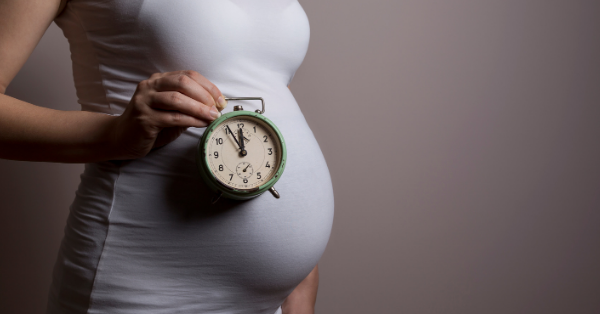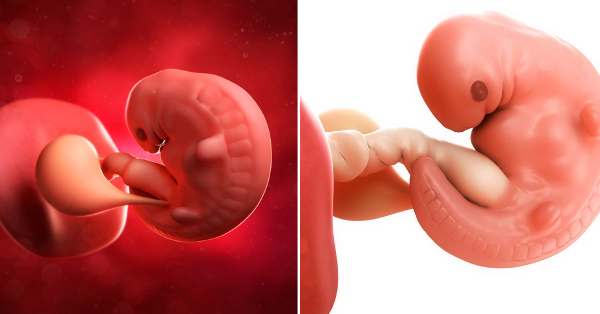What Is Type 1 Diabetes?
Type 1 diabetes is a condition in which your immune system destroys insulin-making cells in your pancreas. These are called beta cells. The disease is usually diagnosed in children and young people, so it used to be called juvenile diabetes.
A condition called secondary diabetes is like type 1, but your beta cells are wiped out by something else, like a disease or an injury to your pancreas, rather than by your immune system.
Both of these are different from type 2 diabetes, in which your body doesn’t respond to insulin the way it should.
Type 1 Diabetes Treatment
Type 1 Diabetes Patients should follow the following tips:
* Prefer eating healthy foods:
Cut down your preference for junk foods, oily food, and highly processed foods, since all of them have a [high glycemic index] and can contribute significantly to altering your sugar balance in the body. Since diabetes is one of the significant risk factors for many cardiovascular diseases, including heart attack, it is good to modify your eating habits to cut down on this risk.
Include more fibre: It may help significantly in controlling your blood sugar. You can get fibre from whole grains, beans, fruits, and vegetables. Prefer whole grains for making chapattis since the bran helps them in keeping control.
Cut down carbs and increase proteins: Carbohydrates are the quickest source of energy and are easily converted to sugars. Reduce your intake of carbs. Fats, although not directly converted to sugar, can slow down metabolism and make it sluggish. Proteins do not contribute significantly to your GI until they are consumed more than what is needed by your body.
* Sugar and Sugar Substitutes:
Eating sugar doesn’t cause type 1 diabetes. Yet, eating sugar provides a quick surge to the blood sugar levels. Keep your sugar consumption to a minimal level will surely be beneficial. Sugar-free foods are also not advised but can be taken occasionally to satisfy your sugar cravings.
Take good fruits for diabetics foods: They have a very [low glycemic index] and are highly rich in essential nutrients like calcium, potassium, fibre, magnesium, and other vitamins. These are foods like fish, beans, berries, citrus fruits, nuts, and fat-free yoghurts and milk. You can read more about diet for type 1 diabetes.
1. Cinnamon in its whole form or as an extract can help to reduce the blood glucose levels. More studies are being conducted each day to know about the promising side of using cinnamon as a diabetes treatment medicine.
2. Chromium is essential for the metabolism of carbohydrates. Researches on the use of chromium are mixed. Low doses are very safe for many people, but if consumed in an adequate amount, it can reduce the blood sugar level at an alarming rate. High doses of this chromium lead to potential kidney damages.
3. Low G. I food:
[Low Glycemic Index] (low GI) foods are safe and suitable for Diabetics primarily type 1 or juvenile Diabetics or Insulin-dependent diabetics.
Low G. I foods include:
* oats, barley, muesli
* whole grain wheat, corn, maze
* low starch, “less ripe” fruits like guava, oranges
* vegetables for people with diabetes like carrots, beans, cucumber, cauliflower, cabbage, any green or red leafy vegetables, soybean, cowpeas, peas, legumes, bitter gourd, bottle gourd, snake gourd
* yam, sweet potato
* nuts: Almonds, pasta, walnuts
* soy products, soy milk
They can add a small portion of medium GI foods to their menu. Those food items can be:
* Boiled rice or red rice or brown rice
* sour and medium sweet “less ripe” fruits like green grapes and papaya
* buttermilk, milk, curd
* nuts: groundnuts
* vegetables: row banana, melon.
* sweets: Less sweet raisins (not more than 50grams a day), honey (half a teaspoon to 1 teaspoon in the morning)
Tender “neem” leaves, tender “mango” leaves, “guava” leaves, “Tulsi or Basil”, ‘Touch me not’ plates, “coriander and curry leave” are found to be useful as these can prevent complications and help manage blood sugar level in type 1 diabetics.
Knowing about, how much carbohydrates are needed and what are the different kinds that are required; would be your first step towards, planning your diabetic recipes. In this regard, it is interesting to understand that there are about three different kinds of carbohydrates in the food, such as starches, sugars, and fibres. Starchy food may include vegetables like peas, corn, lime beans, potato beans, Etc. Whole grains such as oats, barley, and rice can as well be categorized under starch. Although, it is essential to understand that grains can be divided into the whole grain, containing all the three germ layers and with all the necessary nutrients it has to offer; whereas refined grain is mainly connected with the middle endosperm layer, which doesn’t contain many vitamins and nutrients, except for the starchy material.
Sugars are classified as direct sugar, obtained from sugar cane, nectar, confectionaries, and other raw sources as well as indirect sugar that is being obtained from milk, fruits, Etc. Fibre is the plant source and is required for a healthy digestive system; it can contribute your nutritional requirement by making you feel full and satisfied.
Thus, it would be wise to optimize your carbohydrate requirement by opting for the most nutrient-dense choices, with smaller portion sizes. For that matter, you need to avoid sugary drinks, including soda, sweet tea, fruit punch, Etc. Whole fruit should be preferred instead of juice. Sweet potatoes can be a better alternative for white potato and whole-grain oatmeal, brown rice and barley should always be welcome. More indulgence towards diabetic superfoods
Thus, your healthy diabetic recipes should contain diabetic superfood as listed below with a known [low glycemic index] and critical nutrients such as calcium, potassium, fibre, magnesium as well as vitamins mainly A, C, and E. These superfoods can be:
* Beans
* Dark green leafy vegetables
* Citrus varieties
* Sweet Potatoes
* Berries and tomatoes
* Fish with a high content of omega-3-fatty acids
* Whole grains, nuts as well as fat-free milk and yoghurt
The combination of these super-ingredients with the counted amount of carbohydrate can come up with the most nutritious yet taste meal’ which can be consumed without any fear of sugar shoot up, but of course, meal size should be smaller.
Avoid the following Foods FOR
• Avoid added sugar like Juices, Syrups, Soft Drinks, tea, coffee, Etc.…
• Starchy Vegetables like potato, corn, peas, Etc.…
• Refined grains like Maida or Products made from Maida like White Bread, Pasta, Rice
• Sugary baked foods like Pastry, Cakes, Muffins, Etc.…
• Snacks (Fried Food) like Potato chips, French fries, Burger, Pizza, Etc.…
• Avoid fruits like Banana, Mango, Custard apple, Chikoo
Let’s start Weight Loss Diets for type 1 diabetics.
- Start your day with detox water, empty stomach. Detox water will detoxify your body and will help to naturally reduce inflammation, boost energy, support digestion, and promote healthy skin.
- Cucumber Lemon Detox Water - Flat Belly Diet Drink | Cucumber & Lemon Detox Water to Lose Belly Fat Fast | Vibrant Varsha
- Cumin Water (Jeera Water) - Fat Cutter Drink for Quick Weight Loss | Weight Loss Drink with Cumin/Jeera Seeds | Vibrant Varsha
- Fenugreek / Methi Detox Water - Methi/Fenugreek Seeds Detox Water for Weight Loss | Fat Cutter Drink to Lose Belly Fat
At morning breakfast, have any one of the followings:
- Bhagat (Barnyard Millet) Upma - PCOS/PCOD Diet Recipe for Weight Loss | Healthy Gluten-Free Recipes for Weight Loss - Vibrant Varsha
- Daliya Upma
- Java (Barley) Upma
- Sprouts Bhel - How to Lose Weight Fast 7Kg in 7 Days with Sprouts Diet / Salad Recipe | 1000 Calories Diet Plan
- Mid-Morning (2 hrs after breakfast) - Have 1 Pear / Orange / Sweet Lime / 1 Glass Buttermilk
How long can a person with type 1 diabetes live with no treatment?
This will depend a great deal on two things:
1. Is the person still in the honeymoon period? A person who newly has diabetes usually retains some insulin production. This can last for months or even years.
2. Is the person aware that they are out of insulin? There are methods for mitigating (a little) the lack of insulin if one is aware of it.
Suppose a person is a long term diabetic with 0 insulin production, and they are unaware that they are out of insulin, so they continue to eat and drink like normal. In that case, they can fall into DKA (diabetic ketoacidosis) within 24 hours, and without treatment, death is likely within a few days. Suppose the said person still has SOME insulin production. In that case, as soon as they stop consuming more carbs than their body can deal with, their situation may stabilize, and while death is still likely, it can take months, or even a year or two.
Suppose a person has 0 insulin production and is AWARE of the lack of insulin. In that case, they will immediately stop consuming carbohydrates and begin drinking water in copious quantities. They will also start exercising. Exercising will help reduce blood sugar to some extent, and drinking lots of fluids can help flush the ketones that cause DKA out. The person won’t be able to stave off death forever, but they will extend the amount of time it takes to fall into DKA and then die; but even then.
Suppose the person is in the honeymoon phase and still producing 10% or 20% of an average person’s insulin. In that case, they may well be able to survive for years by radically reducing their carbohydrate intake and exercising regularly. But as their production of insulin drops, they will gradually have greater and greater problems until they too die.











0 Comments